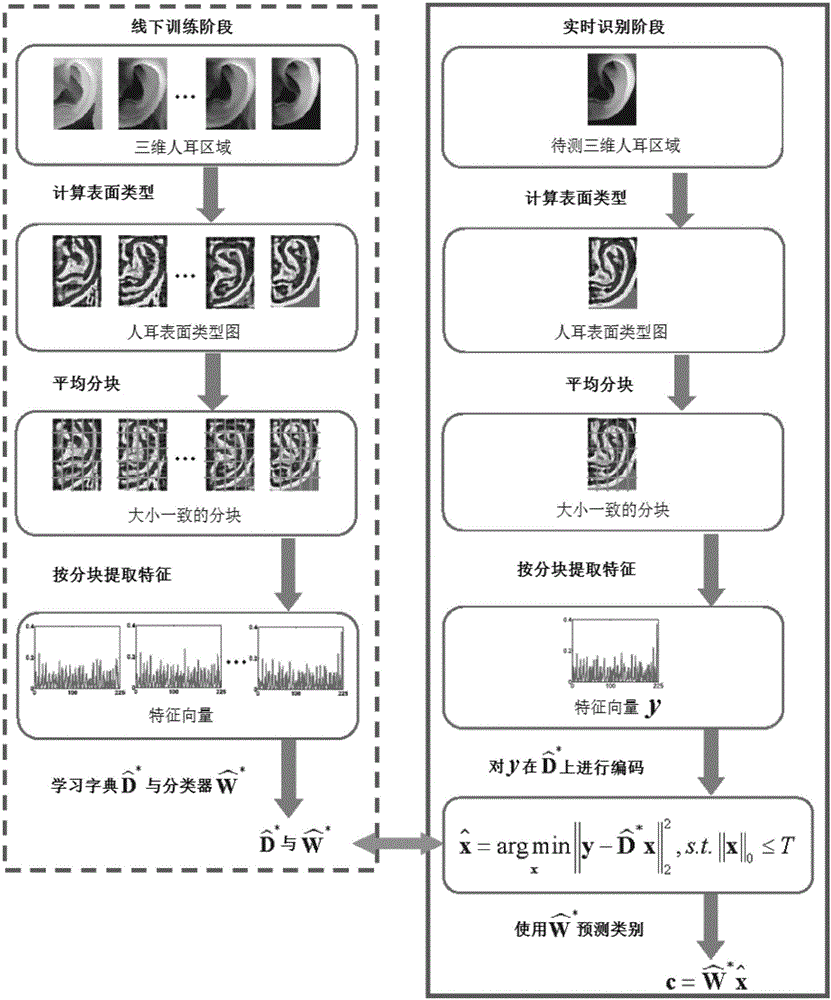Three-dimensional ear recognition based on block statistic features and dictionary learning sparse representation classification
A technology of dictionary learning and statistical features, applied in the field of human ear recognition
- Summary
- Abstract
- Description
- Claims
- Application Information
AI Technical Summary
Problems solved by technology
Method used
Image
Examples
Embodiment Construction
[0051] The present invention will be further described below in conjunction with the embodiments shown in the accompanying drawings.
[0052] Aiming at the problem that in the previous 3D human ear matching process, the human ears to be verified and the sample data sets in the database need to be registered and matched one by one, and the efficiency is greatly reduced as the capacity of the sample data sets increases. The present invention adopts dictionary learning and sparse representation The classification algorithm performs one-to-many recognition of the three-dimensional human ears to be measured; for the small alignment errors that still exist after the registration and matching of the three-dimensional data of the human ears, the present invention adopts a description operator based on block statistical features to establish an accurate and fast 3D human ear recognition method, its specific workflow is as follows figure 1 Shown:
[0053] (1) Determine the three-dimens...
PUM
 Login to View More
Login to View More Abstract
Description
Claims
Application Information
 Login to View More
Login to View More - R&D
- Intellectual Property
- Life Sciences
- Materials
- Tech Scout
- Unparalleled Data Quality
- Higher Quality Content
- 60% Fewer Hallucinations
Browse by: Latest US Patents, China's latest patents, Technical Efficacy Thesaurus, Application Domain, Technology Topic, Popular Technical Reports.
© 2025 PatSnap. All rights reserved.Legal|Privacy policy|Modern Slavery Act Transparency Statement|Sitemap|About US| Contact US: help@patsnap.com



